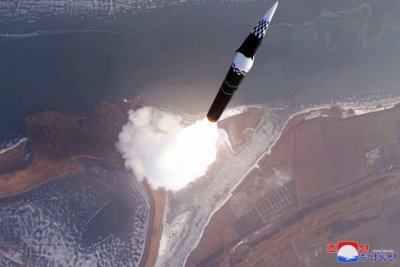S. Korea sees N. Korea test new long-range air defense missile

Dec. 25 (Asia Today) — North Korea said it conducted a first test launch of a high-altitude long-range surface-to-air missile system under development, but a South Korean defense expert said the launch appeared to be a flight test because no interception footage was released.
North Korea’s Korean Central News Agency said the Missile Bureau carried out the test Wednesday to evaluate the system’s tactical and technical characteristics. The agency said the missile hit and destroyed a simulated high-altitude target at a range of 200 kilometers.
The Missile Bureau said the test was part of routine work by the bureau and its research institutes to advance the country’s air defense capabilities. State media said Kim Jong-un observed the launch and praised the results.
The missile was first shown publicly at an event marking the 80th anniversary of North Korea’s air force last month, according to the report.
Shin Jong-woo, secretary general of the Korea Defense and Security Forum, said North Korea claimed it intercepted a simulated target but did not release footage of the intercept. He said that suggests the test focused on flight performance and reflects an effort to develop a new surface-to-air missile as North Korea’s SA-5 long-range system ages.
South Korea’s Joint Chiefs of Staff said it detected the launch Wednesday but did not disclose it publicly at the time.
The Joint Chiefs of Staff said it had detected indications of a launch in advance and was prepared. It said that around 5 p.m. Wednesday it detected multiple projectiles believed to be surface-to-air missiles launched from the Sondok area in South Hamgyong Province toward the East Sea.
The Joint Chiefs of Staff said it is closely monitoring North Korea’s activities under the South Korea-United States combined defense posture and remains ready to respond to any provocation.
— Reported by Asia Today; translated by UPI
© Asia Today. Unauthorized reproduction or redistribution prohibited.
